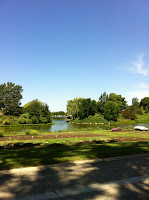In Z’ria U’Binyan B’Chinnuch, Planting and Building, by Rav Shlomo Wolbe z’tl (English translation by Rabbi Leib Keleman) the beginning of Mesillas Yesharim is quoted, which states (pages14-15):
“The foundation of Chassidus (piety) and the root of perfect service of Hashem is understanding and appreciating one’s obligation in one’s personal world.” It is tempting to gloss over the apparently repetitive phraseology, “The foundation of Chassidus” and “the root of perfect service of Hashem,”…in this short phrase, Ramchal teaches us that there are two, parallel processes in serving Hahsem.
The first one, Chassidus, demands a foundation. Chassidus constitutes the top floor in the construction of a human being and construction always requires a foundation. The taller and loftier the building we wish to construct, the deeper the foundation we must dig. To reach the heights of Chassidus, we must first lay a strong foundation and then build on it.
The second one, Divine service, evolves organically from within, and such growth requires a root, Ramchal hints. Where there is no root, there can be no growth. In one terse sentence, Ramchal informs us that we must be involved in both construction (building ourselves through the acquisition of ma’alos– good qualities) and growth (sowing internal seed that will sprout during our lifetime). And with this understanding we should learn the remainder of the introduction to the Mesillas Yesharim
This is exactly why our there needs to be both building and construction in raising a child and in building ourselves. A sprinkle of piety here and a pinch of servicing Hashem there helps make things taste better. Of course, I’m referring to the ta’am (taste) of a mitzvah. Hey, I’ll admit that that as a man I can only do one thing at a time. If I’m being asked to work on constructing a edifice with a strong foundation, then how work on nourishing my ever growing roots?
My own interpretation of this is that since roots are under the surface, working on growth is something we keep to ourselves, like a smokeless fire (see this post). What our families, friends, and people we bump into will see is how those roots essentially help with the construct of the “building” in the form of those mitzvos that we perform out in the open, such as davening, learning, or a chessed.
Speaking of Mesillas Yesharim, A Simple Jew was kind enough to tell me about a new edition of Mesillas Yesharim coming out July 31, 2013 from Artscroll. with seriously useful commentary.













